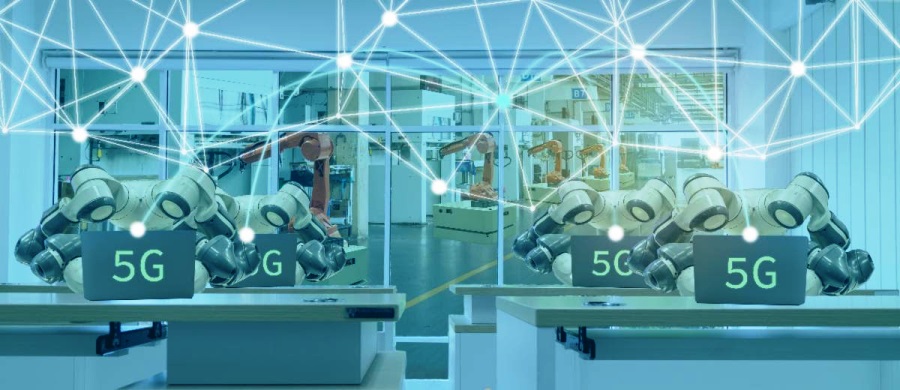Members of the International Telecommunication Union (ITU) today approved a fourth technology as part of ongoing standards development for 5G mobile services.
Known as “DECT 5G-SRIT”, the new technology supports a range of uses, from wireless telephony and audio streaming to industrial Internet of Things (IoT) applications, particularly in smart cities.
RELATED 5G, Emerging Technologies Are Key Regulatory Focus In Sub-Saharan Africa – IDC
It was added in the first revision to ITU’s key recommendation IMT-2020, which broadly encompasses fifth-generation, or 5G, networks, services, and devices.
This ITU Radiocommunication Sector (ITU-R) Recommendation – providing a set of global technical 5G standards – reflects continual consultation and discussion among governments, companies, regulators, and other stakeholders dealing with radiocommunication worldwide.
Along with fostering connectivity across borders, ITU promotes the global rollout of 5G as a key driver to achieve the UN’s 17 Sustainable Development Goals.
“New and emerging technologies like 5G will be essential to build an inclusive, sustainable future for all people, communities and countries,” said ITU’s Secretary-General, Houlin Zhao. “Under the ongoing International Mobile Telecommunications or IMT programme, our diverse global membership continues its long-standing contribution to advance broadband mobile communications, furthering our mission to leave no one behind in connecting the world.”
A new radio interface technology
ITU – the United Nations agency entrusted with coordinating radio-frequency spectrum worldwide – today published the specifications for the new technology as Recommendation ITU-R M.2150-1.
The technology is designed to provide a slim but strong technical foundation for wireless applications deployed in a range of use cases, from cordless telephony to audio streaming, and from professional audio applications to the industrial Internet of Things (IoT) applications, such as building automation and monitoring.
The European Telecommunications Standards Institute (ETSI) laid the essential groundwork jointly with the DECT Forum, a worldwide association of the digital enhanced cordless telecommunications (DECT) or wireless technology industry.
ITU’s Radiocommunication Director, Mario Maniewicz, said: “The highly collaborative process involves substantial input from and coordination with the ITU Member States, equipment manufacturers, network operators, standards development organizations, and the academic community. ITU provides a unique global framework to discuss the capabilities of new radio technologies.”
Andreas Zipp, Chairman of the DECT Forum, welcomed the addition of the new technology to IMT-2020. “Inclusion as part of ITU’s global 5G standards affirms the significance of this technology moving forward,” he said.
Other candidate radio interface technologies underwent the international mobile telecommunication (IMT) evaluation process over the past year, although only one qualified to be added at this stage.
The revised IMT-2020 recommendation now includes the new standard, which European standards developers recognized could support 5G uptake everywhere.
“The ETSI DECT standard received IMT-2000 approval more than twenty years ago,” noted ETSI’s Chief Technical Officer, Adrian Scrase. “5G therefore presented an ideal opportunity to develop this new, non-cellular, radio standard, which is particularly suited for smart meters, Industry 4.0, building management systems, logistics and smart cities.”
Based on the requirements set out in ITU’s evaluation process, the radio interface technology demonstrates worldwide compatibility in terms of operation, equipment, and roaming. It also addresses the ultra-reliable low latency (URLLC) capability stipulated by IMT-2020 – the underlying global coordination framework for so-called 5G services.
About IMT-2020
IMT-2020 stands for the requirements issued by ITU’s Radiocommunication Sector for 5G starting in 2015.
Full-scale commercial deployment of 5G networks has only taken off in the past year, following ITU’s publication of a key radiocommunication technology recommendation.
ITU published the only globally agreed IMT standard for radio interface technologies in February 2021 under the designation Recommendation ITU-R M.2150.
At the time of publication, three technologies met the stringent IMT-2020 performance requirements. Two of those (3GPP 5G-SRIT and 3GPP 5G-RIT) came from the Third Generation Partnership Project (3GPP), while another (5Gi) was submitted by the Telecommunications Standards Development Society of India.
Collaborative evaluation
ITU sought wide-ranging input to ensure the new recommendation would reflect the latest real-world requirements.
In parallel, ITU has initiated the development of IMT for 2030 and beyond, setting the stage for new research activities. ITU-R Working Party 5D, tasked with studying IMT systems, has started to consider the future requirements for the global uptake of the next generation of international mobile telecommunication. The next World Radiocommunication Conference (WRC-23) hosted by the United Arab Emirates will address further aspects of IMT systems, among other topics.
“Even as 5G becomes mainstream, research is well underway into the next generation of mobile networks,” Secretary-General Zhao said.































